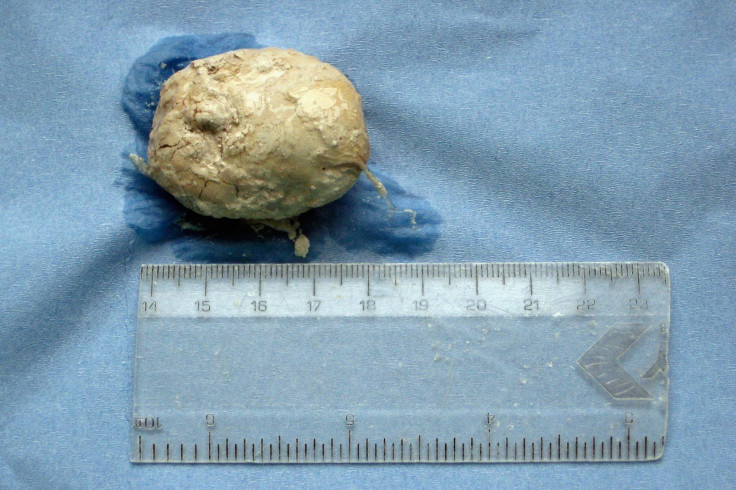California Man Gets Bladder Stone Almost As Big As Ostrich Egg Removed

You might not want to ignore that stomach pain that refuses to go away, as you might end up getting operated upon as this California man to remove a stone, which in this case was almost as big as an ostrich egg.
The 64-year-old man, who was not identified, visited the emergency room at St. Mary Medical Center Long Beach after experiencing pain in his left side and reported having trouble urinating for three days.
Doctors operated upon him and took out the egg-shaped bladder stone, which was almost as big as an ostrich egg, a report published Thursday said.
A CT scans revealed that the man had two stones — a small one in the ureter connecting his left kidney to his bladder; and the second one was a huge stone in the bladder itself, Science Alert noted.
The report published in the New England Journal of Medicine said: "The patient underwent an open neocystolithotomy to extract the neobladder stone, which was egg shaped and measured 12 cm by 9.5 cm by 7.5 cm (4.7 by 3.7 by 3 inches), weighed 770 g (1.7 pounds), and was composed of 20 percent struvite and 80 percent calcium phosphate (Panel C)."
The size of the stone was not exactly as big as an ostrich egg, however, it was close to it, according to Science Alert, a scientific publisher that publishes peer-reviewed research work.
The largest bladder stone ever removed was from a 62-year old patient in Brazil, which weighed 1.9 kilograms, according to Guinness World Records.
In 2015, doctors in central China took out a 5.5-inch-tall gallstone from a 70-year-old man's body. The stone was a rare egg-shaped one and was described as the color of rotting flesh, Daily Mail reported citing the People's Daily Online.
In 2012, a 43-year-old man got a bladder stone removed in China, which, according to chief surgeon Wu Tianpeng, was the largest bladder stone he had ever seen. He said it was also the second heaviest stone ever found in China, a report said. The doctor said: "A normal person's bladder could only contain 300-500ml of urine or 1,000 ml at a maximum. This stone occupied a space of more than 700ml. It must have been quite a pain for him."
Bladder stones are formed in people's bodies when they cannot empty their bladders and due to which, hard masses of minerals are formed, according to Mayo Clinic, a not for profit medical practice and research group based in Minnesota, U.S. Although, the more common symptoms are severe abdominal pain or blood in the urine, sometimes people don't experience these symptoms.
Bladder stones are not the same as kidney stones and are usually caused by bladder inflammation. Bladder stones get formed when the body is dehydrated or the urine is too concentrated, which gives way to formation of crystals in the bladder. As time passes, these crystals get developed into larger stones.
According to Harvard Health Publications, women are at greater risk of being diagnosed with gallstones, due to the effect of female hormones. "Estrogen increases cholesterol in the bile, and progesterone slows the emptying of the gallbladder. That may explain why the risk for women, relative to men, decreases with age. Before age 40, women are diagnosed with gallstones almost three times more often than men are (pregnancy, for example, increases the risk), but by age 60, their risk is just slightly greater."
© Copyright IBTimes 2025. All rights reserved.






















